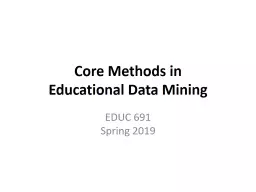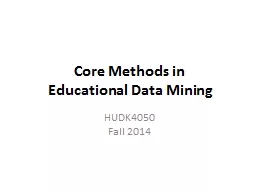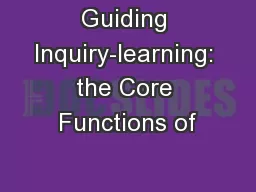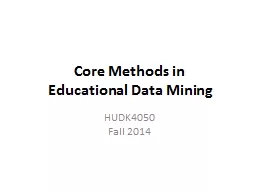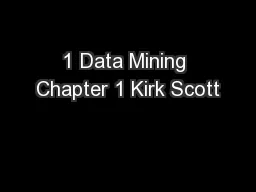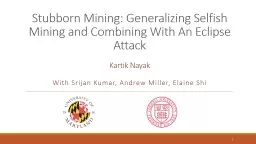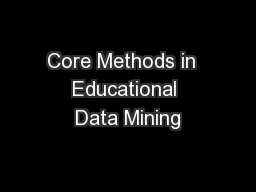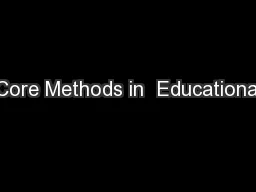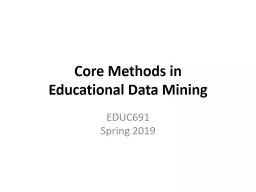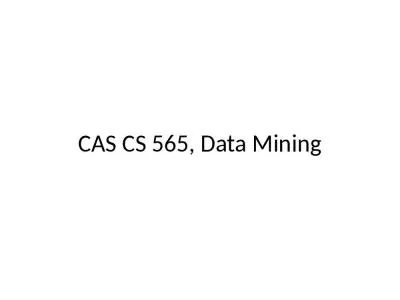PPT-Core Methods in Educational Data Mining
Author : aaron | Published Date : 2019-11-08
Core Methods in Educational Data Mining EDUC 691 Spring 2019 Assignment BA4 Questions Comments Concerns Association Rule Mining Todays Class The Land of Inconsistent
Presentation Embed Code
Download Presentation
Download Presentation The PPT/PDF document "Core Methods in Educational Data Mining" is the property of its rightful owner. Permission is granted to download and print the materials on this website for personal, non-commercial use only, and to display it on your personal computer provided you do not modify the materials and that you retain all copyright notices contained in the materials. By downloading content from our website, you accept the terms of this agreement.
Core Methods in Educational Data Mining: Transcript
Download Rules Of Document
"Core Methods in Educational Data Mining"The content belongs to its owner. You may download and print it for personal use, without modification, and keep all copyright notices. By downloading, you agree to these terms.
Related Documents

